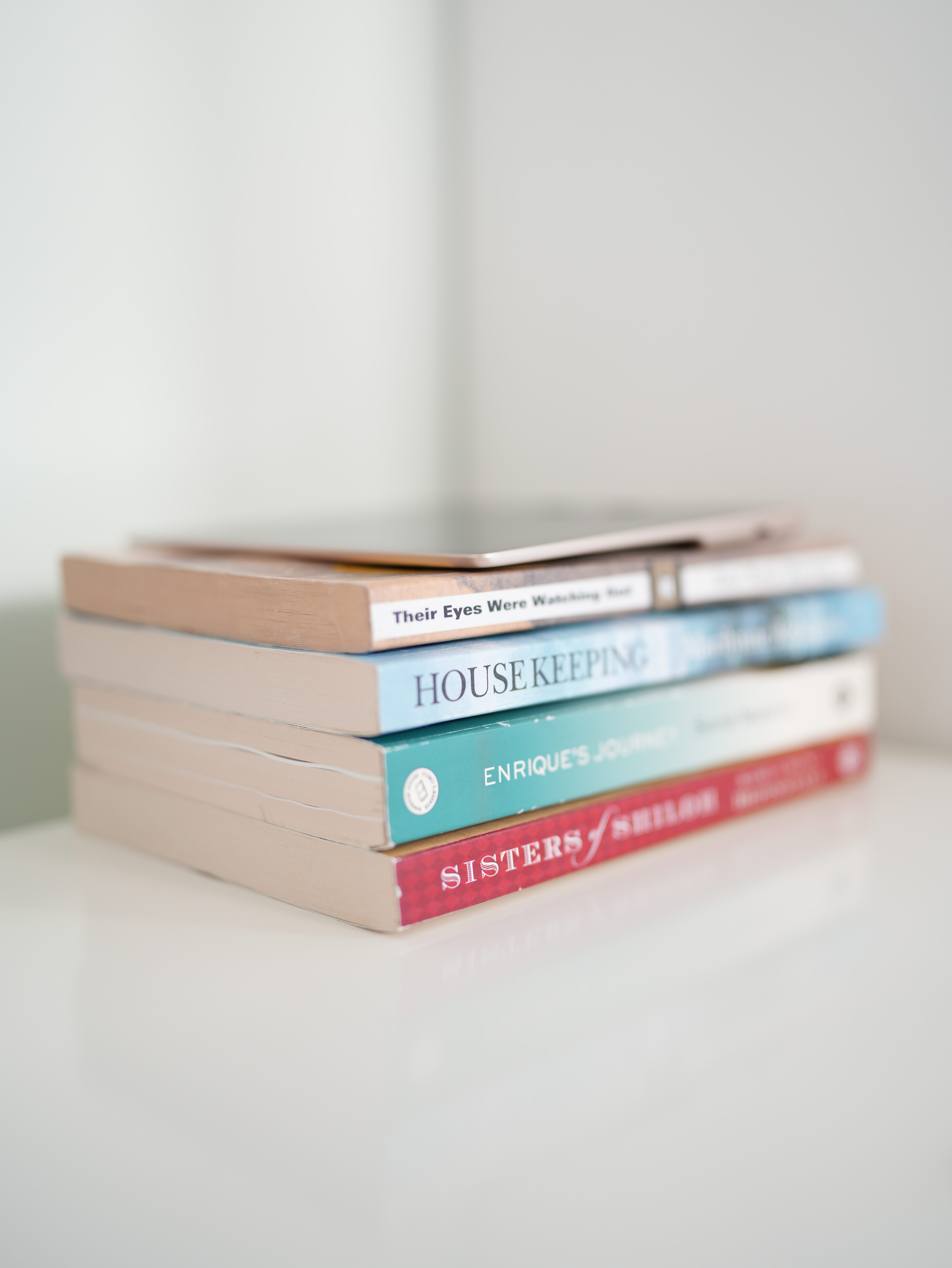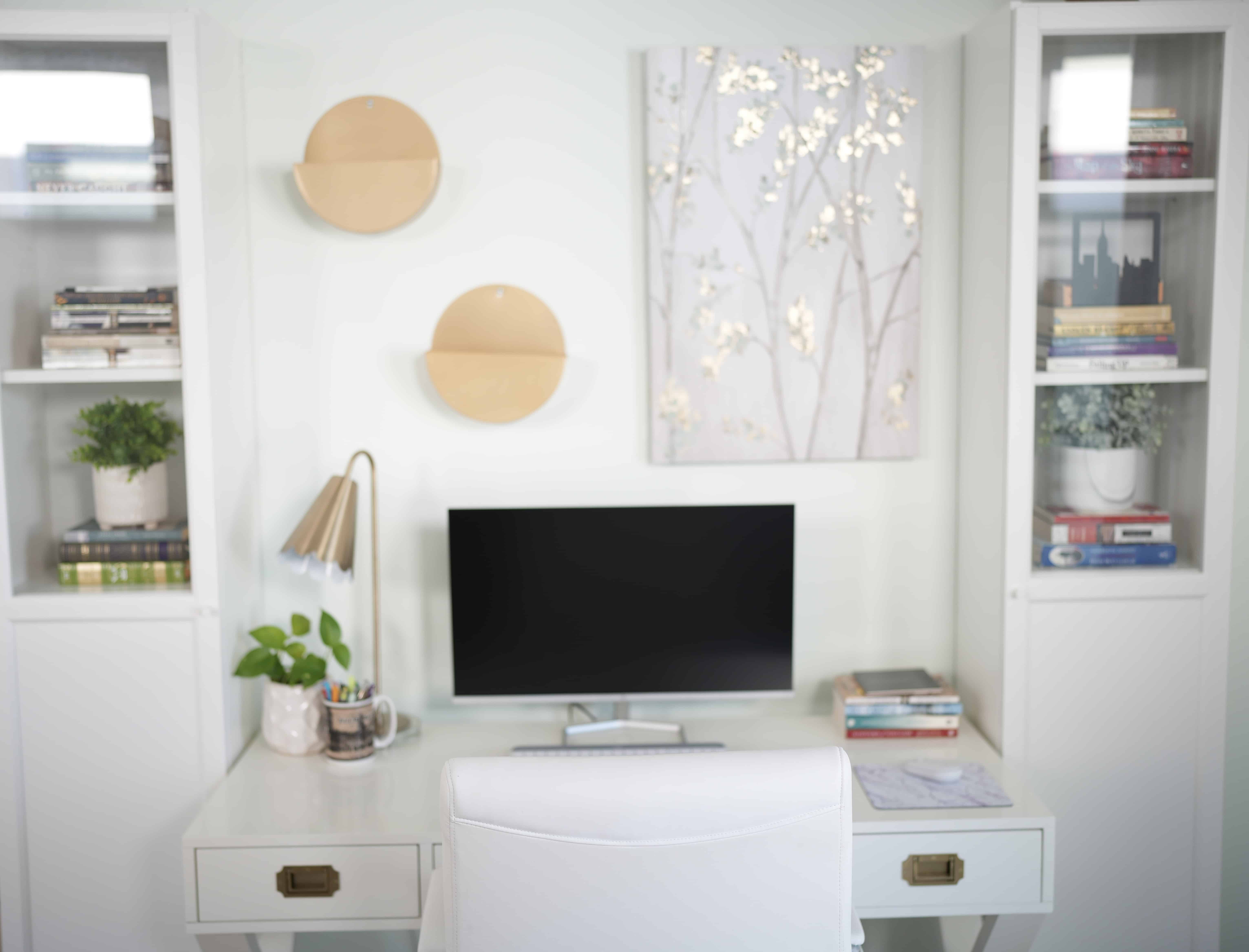How to Read More Books
Are you determined to read more books this year? I know I am!
Reading is an excellent way to broaden knowledge, unwind from a stress-filled day, and enhance cognitive abilities. The benefits are endless.
In today’s fast-paced world, there are numerous distractions that make it hard for us to find the time to read. We all need a little guidance from time to time.
If you’re one of those individuals who want to read more books but need help knowing where to begin, this article is for you!
I’ve applied my own advice countless times because no matter how much of an avid reader you are, it’s not easy to stay on a reading schedule.
The following tips can help you stay determined and read more books in a faster amount of time.

To read more books, the first step is to set a goal. This is the fun part! I love setting reading goals at the beginning of the year and even at the start of a new season.
Determine how many books you want to read in a week, month, or year, and create a plan to achieve that target.
Currently, my personal goal is to read one book a week. However, as a mom to an energetic toddler, this can be quite challenging. Therefore, I try to choose books that are NOT 600 pages long!
Sorry, Ana Karenina! Those days are long gone for me now, haha. (I read this Tolstoy novel in college and it’s one of my absolute favorite books).
My advice is to start with small goals and gradually increase the number of books you read as you get comfortable.
A practical approach to include reading in your daily routine is to allocate a specific time for it.
For instance, you may choose to read for 20 minutes before going to bed or during your daily commute to work.
Maybe you have 15 minutes during your child’s nap time where you can grab your book or Kindle and start reading. Can you read while having lunch?
Find a time and stay consistent to form a good reading habit.
By establishing achievable goals, you can easily keep on track and make reading a regular part of your routine.
Choose the Right Books and Genre
When you set reading goals, you should choose books you find interesting. If you’re not enjoying what you’re reading, it can be challenging to stay motivated.
And you might not like the current bestsellers or what everyone else is raving about.
It’s essential to consider your personal taste when selecting books.
If you’re a beginner, starting with shorter books or books in a genre you enjoy is the best way to go.

When selecting books, you should consider your reading level. If you find the text difficult to comprehend, it can be disheartening.
Maybe stick to commercial fiction for the time being before moving on to the classics.
Creating a Reading Schedule
After selecting the books you want to read, creating a reading schedule is essential to stay on track and achieve your goal.
To begin with, set a realistic target for the number of books you want to read within a specific time frame.
Next, divide your objective into smaller, more manageable sections.
For instance, if you aim to read 12 books in a year, you could plan to read one book per month.
Then, create a schedule for when you will read each book. It could be a specific time, a certain number of pages per day, or several chapters each week.
It’s essential to remain flexible with your reading schedule since life can be unpredictable, and you may need to adjust your plans occasionally.
The key is to keep reading and making progress towards your goal.
Creating a Reading Environment
Creating a reading-friendly environment involves minimizing distractions and optimizing lighting and comfort to aid concentration and focus.
Minimizing Distractions
Distractions can hinder the reading experience, especially in the world of smartphones.
Finding a quiet place to read is recommended to minimize distractions, away from loud noises.
Turning off electronic devices such as phones, tablets, and computers can also help minimize distractions.
Notifications from these devices can interrupt the reading flow, so it is best to put them in another room, put them on silent, or turn them off entirely while reading.
Optimizing Lighting and Comfort
When it comes to reading, having a good environment is crucial.
Lighting and comfort are two essential factors to consider.
First, choose a place with good lighting that’s easy on the eyes.
Natural light is usually the best option, but a soft-light lamp can be used instead.

Comfort also plays a vital role, too.
Your reading nook should be comfortable and a place you love going to.
Finding a comfortable and conducive position to read for extended periods is essential!
Creating an ideal reading environment can help you stay focused.
Try to create your own cozy reading nook if you can, it’s a game-changer! Here are some photos of my book nook, along with a few tips to design your own.
Improving Reading Techniques
Speed Reading
Speed reading is a popular technique that helps people read more words in less time. I remember taking a speed reading class as a pre-teen!
Here are some tips to help you improve your speed reading skills:
- Use a pointer as your guide: This helps your eyes focus on the line you’re reading. Grab a pen or use your finger to guide your eyes along each word and sentence on every page. This helps you stay in place.
- Avoid subvocalization: Subvocalization is the habit of silently pronouncing every word as you read. This slows down your reading speed. Instead, try to look at groups of words at a time.
- Practice: Like any skill, speed reading takes approach. Start by timing yourself as you read, and gradually increase your speed if you can, but don’t stress it if you can’t; it’s no big deal! Reading should be enjoyable, not cumbersome.

Active Reading Strategies
It can be annoying to read an entire page and not remember what you just read.
This is where active reading techniques can help. If you’ve never heard that term before, let me explain:
Active reading requires actively engaging with the text and critically analyzing the content.
It involves interacting with the material and thinking deeply about the ideas. Here are some strategies to help you become a more active reader:
- Take notes about the text you’ve read: Just as in class, jotting down notes you want to highlight about the book is a great way to organize your thoughts. If something strikes you as necessary, quickly highlight it or write a note.
- Ask questions: Asking questions about the text can help clarify things for you when you get back to it.
- Visualize: Visualizing the scenes and characters in your mind can help you create a more vivid mental image of what you’re reading.
Try out a few of these techniques to see if your reading comprehension improves!
Incorporating Technology
Reading books doesn’t have to be limited to traditional paperbacks of hardcovers.
By incorporating technology, you can make reading more convenient and accessible.
Here are two ways to use technology to read more books:
E-Readers and Reading Apps
E-readers and reading apps are a fantastic way to quickly read a ton of books.
Devices like the Amazon Kindle and the Nook make reading super convenient on the go.
I personally ADORE my Kindle because of the low-lighting options it has.
When my son was an infant, I was able to read at night while I watched him because the light didn’t disturb him, AND I didn’t make any noise when I turned the page.
It would have been impossible to read at night with a traditional book in my hands.
You don’t even need a Kindle or e-reader; you can download reading apps like Kindle, Nook, and iBooks on your smartphone, giving you access to various books without needing a separate device.

Moreover, e-readers and reading apps provide readers with helpful features like adjustable font sizes and the ability to highlight sentences.
These features can improve your reading experience and make understanding and retaining information more accessible than traditional books.
Audiobooks and Podcasts
Audiobooks and podcasts are great ways to add technology to your reading routine.
They’re indispensable to many people.
Audiobooks let you listen to books while on the go, making it easy to multitask and fit more reading into your day.
Many popular books are available in audiobook format, so finding something you’ll enjoy is easy.
You can listen to audiobooks while you do house chores like laundry or dishes, or while you exercise.
Podcasts these days are amazing ways to learn more about books.
Many podcasts feature interviews with authors or discussions about books, making them a great way to discover new books and stay up-to-date on literary news if you’re interested in that.
Whether you prefer e-readers, reading apps, audiobooks, or podcasts, there are many ways to use technology to read more books!
Staying Motivated
Staying motivated to read can be challenging, particularly when life gets hectic. Here are some helpful tips that can help you stay on track AND have a little fun, too.

Tracking Progress
Tracking your progress can be a huge motivator.
You can set goals for yourself, such as reading a certain number of pages or books per week and keeping a reading journal to record the books you’ve read, your thoughts on them, and any quotes that caught your attention.
You can find printable reading journals online and you might enjoy keeping them up to date!
Alternatively, you can use apps or websites like Goodreads or Storygraph to mark the books you’ve read, set reading goals, and connect with other readers to share your reviews.
Joining Reading Communities
Joining a reading community can be a great way to stay motivated and inspired.
Whether it’s a book club, a reading group on social media, a bookstagrammer, or an online forum dedicated to books, being part of a community of readers can provide accountability and expose you to new books and authors.
In addition to enjoying the books you read, reading communities provide a platform to discuss and reflect on them, allowing you to gain new perspectives and insights into the story and characters.
Joining a book club can help you socialize with other people of similar interests and help you stay disciplined.
These days, it’s easy to find a book club that suits your reading tastes. Try
By tracking your progress and joining reading communities, you can stay motivated to read more books and the many benefits.
Good luck with your reading goals – I hope you reach them!